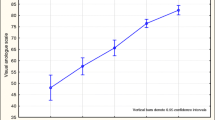Abstract
The areas that were suggested as most important with regard to Quality of Life (QoL) were examined in groups of individuals who were healthy, and those with a chronic condition. An electronic survey was completed by 892 participants (261 healthy and 631 with a chronic condition). They answered three questions relating to QoL: what is most important to you; what areas most impact your QoL; and an open question what does QoL mean to you. Across the three questions both groups highlighted physical functioning, independence and mobility as key areas for QoL. However, the group with a chronic condition tended to find issues of functioning such as pain, fatigue, and sleep as more important to their QoL than the healthy participants. In contrast, the healthy participants tended to note the importance of relationships and family as more important than the group with a chronic condition. That there were such differences between the groups might suggest that different aspects of QoL could be rated as more important when examining this issue with samples with a chronic condition and those without such a condition.


Similar content being viewed by others
References
Bindemann, N. (2010). The meaning of quality of life: A Lifepsychol survey. Practice Nursing, 21, 1–3.
Bowling, A. (1995). What things are important in people’s lives: A survey of the public’s judgements to inform scales of health related quality of life. Social Science and Medicine, 10, 1447–1462.
Breek, J. C., de Vries, J., van Heck, G. L., et al. (2005). Assessment of disease impact in patients with intermittent claudication: discrepancy between health status and quality of life. Journal of Vascular Surgery, 41, 443–450.
Carr, A. J., Gibson, B. A., & Robinson, P. G. (2001). Is quality of life determined by expectations or experience? British Medical Journal, 322, 1240–1243.
Carr, A. J., & Higginson, I. J. (2001). Are quality of life measures patient centred? British Medical Journal, 322, 1357–60.
Department of Health (2010). National Health Service: Outcomes Framework. http://www.dh.gov.uk/en/Publicationsandstatistics/Publications/PublicationsPolicyAndGuidance/DH_122944. Downloaded 16/11/11.
Dunn, O. J. (1961). Multiple comparisons among means. Journal of the AmericanStatistical Association, 56, 52–64.
Granja, C., Cabral, G., Pinto, A. T., et al. (2002). Quality of life 6 months after cardiac arrest. Resuscitation, 55, 37–44.
Gusi, N., Olivares, P. R., & Rajendram, R. (2010). The EQ-5D quality of life questionnaire. In Preedy, V (ed) Handbook of Disease Burdens and Quality of Life Measures (pp 88–99) Springer, London.
Hamming, J. F., & De Vries, J. (2007). Measuring quality of life. British Journal of Surgery, 94, 923–924.
Loewenstein, G. (2005). Hot-cold empathy gaps and medical descision making. Health Psychology, 24, 549–556.
Medical Research Council (2011). Mission Statement. 2011. http://www.mrc.ac.uk/Utilities/Documentrecord/index.htm?d=MRC002423. Downloaded 16/11/11.
Mercier, C., Peladeau, N., & Tempier, T. (1998). Age, Gender and Quality of Life. Community Mental Health Journal, 34, 487–500.
Mitchell, A. J., Benito-León, J., Morales González, J.-M., et al. (2005). Quality of life and its assessment in multiple sclerosis: integrating physical and psychological components of wellbeing. Lancet Neurology, 4, 556–66.
Osborne, L. A., Bindemann, N., Noble, J. G., & Reed, P. (2012a). Changes in the key areas of quality of life associated with age and time since diagnosis of long term conditions. Chronic Conditions, 8, 112–120.
Osborne, L. A., Noble, J. G., Lockhart, H., et al. (2012b). Sources of discovery, reasons for registration, and expectations of an internet-based register for Multiple Sclerosis: Visualisations and explorations of word uses and contexts. International Journal of Healthcare Information Systems and Informatics, 7, 30–46.
Smith, K. W., Avis, N. E., & Assmann, S. F. (1999). Distinguishing between quality of life and health status in quality of life research: a meta-analysis. Quality of Life Research, 8, 447–459.
Steinbock, D. (2011). http://tagcrowd.com.
Testa, M. A., & Simonson, D. C. (1996). Assessment of quality of life outcomes. Current Concepts, 334, 835–840.
World Health Organization (1993). WHOQoL Study Protocol. WHO (MNH7PSF/93.9).
Acknowledgments
There are no direct competing interests, although NB is the director of a company involved in the production of instruments used to measure QoL. The research received no funding.
Author information
Authors and Affiliations
Corresponding author
Rights and permissions
About this article
Cite this article
Osborne, L.A., Bindemann, N., Noble, J.G. et al. Different Perspectives Regarding Quality of Life in Chronically ill and Healthy Individuals. Applied Research Quality Life 9, 971–979 (2014). https://doi.org/10.1007/s11482-013-9280-4
Received:
Accepted:
Published:
Issue Date:
DOI: https://doi.org/10.1007/s11482-013-9280-4




